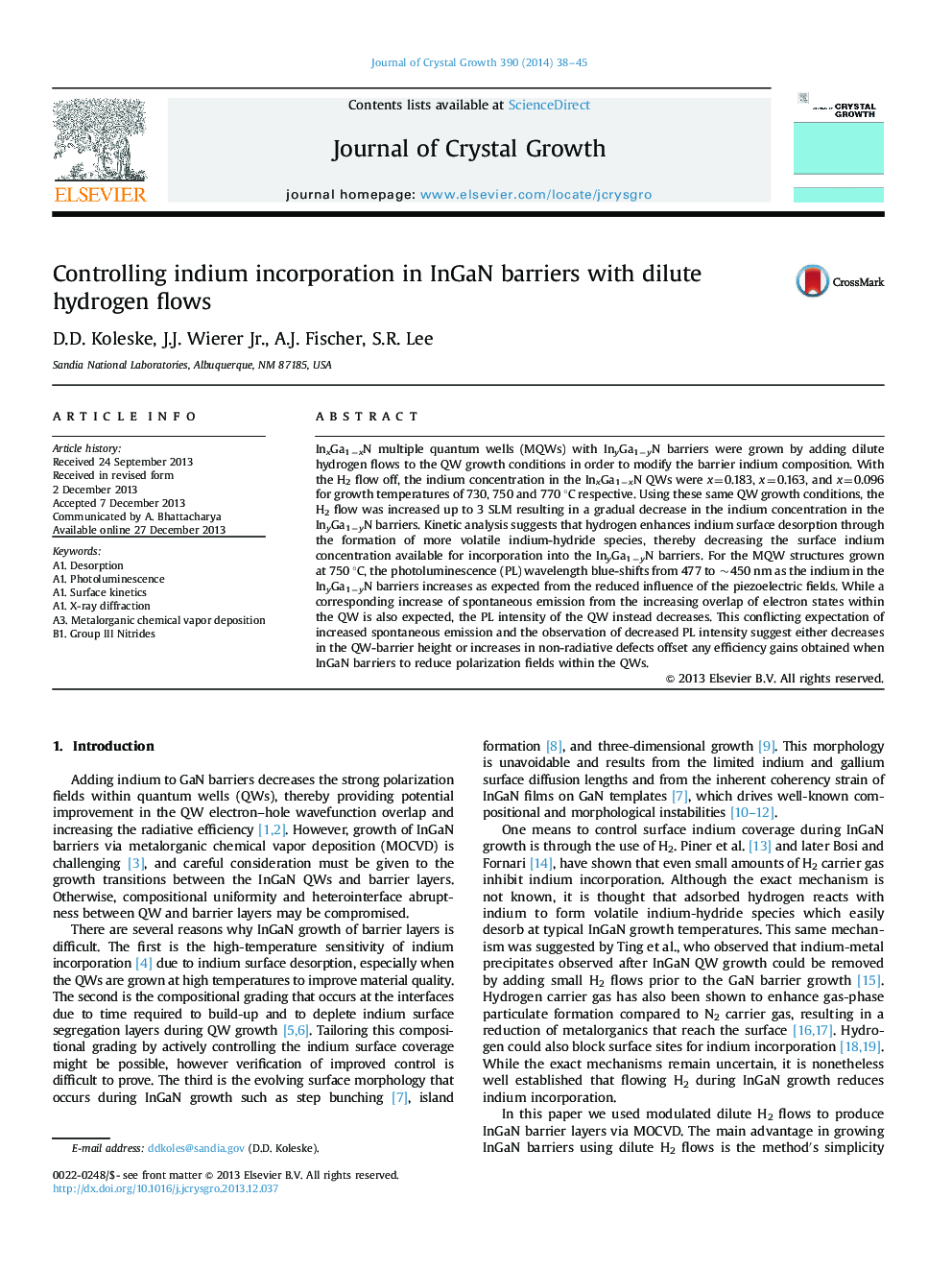| کد مقاله | کد نشریه | سال انتشار | مقاله انگلیسی | نسخه تمام متن |
|---|---|---|---|---|
| 1790563 | 1524439 | 2014 | 8 صفحه PDF | دانلود رایگان |

• Dilute hydrogen flows are used to control indium concentrations of InGaN barriers.
• As expected InGaN barriers blue shift InGaN quantum well emission wavelength.
• Surface kinetic model is proposed to explain enhanced indium desorption in flowing hydrogen and resulting indium incorporation in InGaN barrier layers.
• Reduced PL intensity and lifetime suggest InGaN barriers have increased non-radiative defect concentrations compared to GaN barrier layers.
InxGa1−xN multiple quantum wells (MQWs) with InyGa1−yN barriers were grown by adding dilute hydrogen flows to the QW growth conditions in order to modify the barrier indium composition. With the H2 flow off, the indium concentration in the InxGa1−xN QWs were x=0.183, x=0.163, and x=0.096 for growth temperatures of 730, 750 and 770 °C respective. Using these same QW growth conditions, the H2 flow was increased up to 3 SLM resulting in a gradual decrease in the indium concentration in the InyGa1−yN barriers. Kinetic analysis suggests that hydrogen enhances indium surface desorption through the formation of more volatile indium-hydride species, thereby decreasing the surface indium concentration available for incorporation into the InyGa1−yN barriers. For the MQW structures grown at 750 °C, the photoluminescence (PL) wavelength blue-shifts from 477 to ~450 nm as the indium in the InyGa1−yN barriers increases as expected from the reduced influence of the piezoelectric fields. While a corresponding increase of spontaneous emission from the increasing overlap of electron states within the QW is also expected, the PL intensity of the QW instead decreases. This conflicting expectation of increased spontaneous emission and the observation of decreased PL intensity suggest either decreases in the QW-barrier height or increases in non-radiative defects offset any efficiency gains obtained when InGaN barriers to reduce polarization fields within the QWs.
Journal: Journal of Crystal Growth - Volume 390, 15 March 2014, Pages 38–45